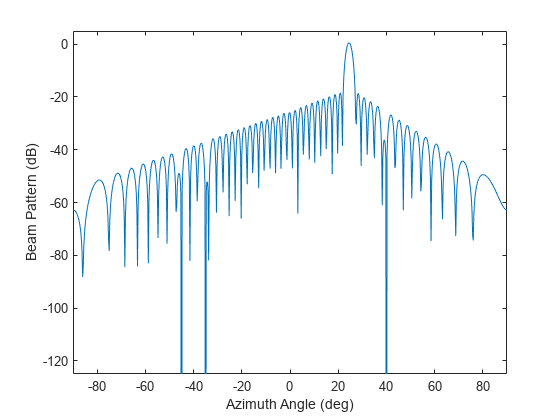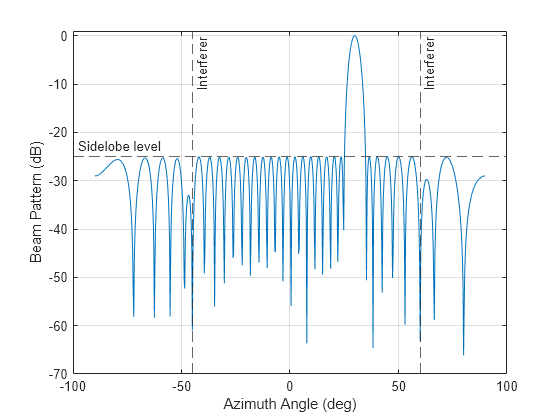minvarweights
Syntax
Description
wts = minvarweights(pos,ang)wts for synthesizing the pattern
of a sensor array in the direction specified by ang. Array element
positions are specified in pos. The function optimizes the beamforming
weights using a second-order cone programming solver. This function requires Optimization Toolbox™.
Examples
Input Arguments
Output Arguments
References
[1] Lebret, H., and S. Boyd. “Antenna Array Pattern Synthesis via Convex Optimization.” IEEE Transactions on Signal Processing, vol. 45, no. 3, Mar. 1997, pp. 526–32. DOI.org (Crossref), https://doi.org/10.1109/78.558465.
[2] Golbon-Haghighi, Mohammad-Hossein, et al. “Design of a Cylindrical Crossed Dipole Phased Array Antenna for Weather Surveillance Radars.” IEEE Open Journal of Antennas and Propagation, vol. 2, 2021, pp. 402–11. DOI.org (Crossref), https://doi.org/10.1109/OJAP.2021.3059471.
Version History
Introduced in R2022b
See Also
steervec | cbfweights | lcmvweights | sensorcov | phased.MVDRBeamformer | phased.LCMVBeamformer


